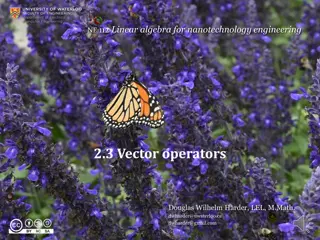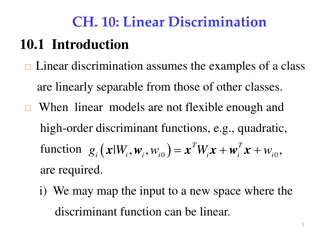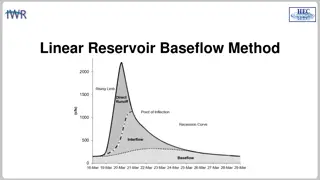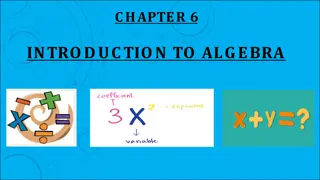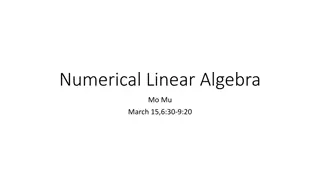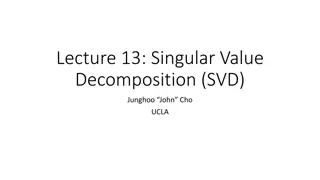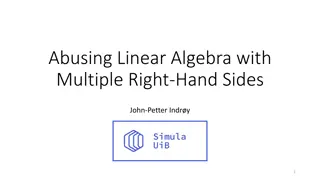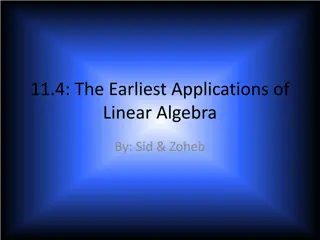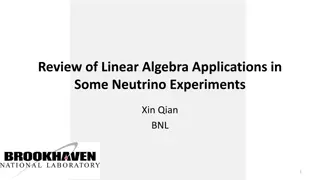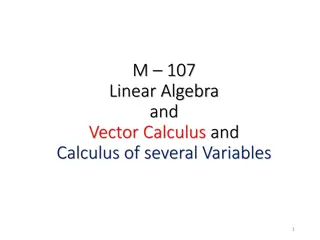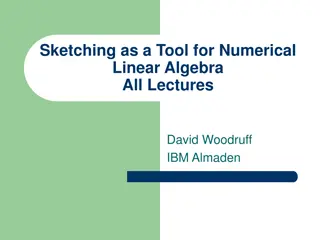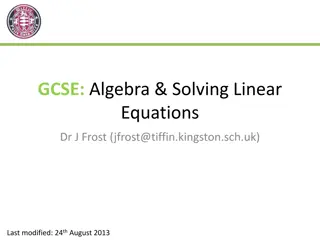
Vector Spaces: A Fundamental Concept in Mathematics
Explore the concept of vector spaces in mathematics, where objects called vectors are added and multiplied by scalars, such as real or complex numbers. Discover the essential properties and operations that define vector spaces, ensuring a solid foundation for further mathematical study.
Uploaded on | 0 Views
Download Presentation

Please find below an Image/Link to download the presentation.
The content on the website is provided AS IS for your information and personal use only. It may not be sold, licensed, or shared on other websites without obtaining consent from the author. If you encounter any issues during the download, it is possible that the publisher has removed the file from their server.
You are allowed to download the files provided on this website for personal or commercial use, subject to the condition that they are used lawfully. All files are the property of their respective owners.
The content on the website is provided AS IS for your information and personal use only. It may not be sold, licensed, or shared on other websites without obtaining consent from the author.
E N D
Presentation Transcript
CHAPTER 1 VECTOR SPACES
INTRODUCTION A vector space or a linear space is a group of objects called vectors, added collectively and multiplied ( scaled ) by numbers, called scalars. Scalars are usually considered to be real numbers. But there are few cases of scalar multiplication by rational numbers, complex numbers, etc. with vector spaces. The methods of vector addition and scalar multiplication must satisfy specific requirements such as axioms. Real vector space and complex vector space terms are used to define scalars as real or complex numbers.
BINARY COMPOSITION Just as we get a number when two numbers are either added or subtracted or multiplied or are divided. The binary operations associate any two elements of a set. The resultant of the two are in the same set. Binary operations on a set are calculations that combine two elements of the set (called operands) to produce another element of the same set. The binary operations * on a non-empty set A are functions from A A to A. The binary operation, *: A A A. It is an operation of two elements of the set whose domains and co- domain are in the same set.
Addition, subtraction, multiplication, division, exponential is some of the binary operations.
Consider a set E; any application of E E on E is called an internal composition law on E. INTERNAL COMPOSITION
VECTOR SPACES We defined a vector space as a set equipped with the binary operations of addition and scalar multiplication, a constant vector 0, and the unary operation of negation, which satisfy several axioms. Here are the axioms again, but in abbreviated form. They hold for all vectors v and w and for all scalars c and d.
1. v + w = w + v 2. (u + v) + w = u + (v + w) 3. v + 0 = v = 0 + v 4. v + ( v) = 0 5. 1v = v 6. c(dv) = (cd)v 7. c(v + w) = cv + cw 8. (c + d)v = cv + dv There are a lot of other properties we want these operations to have, but those aren t included among the axioms because they can be proved from them.
Thus the set must follow the following properties: PROPERTIES UNDER ADDITION: 1. closure property. 2.associative property. 3.existence of additive identity. 4. existence of additive inverse. 5. commutative property. PROPERTIES UNDER SCALAR MULTIPLICATION: Rest properties are the properties under multiplication.
Vector subspaces (Subspace Criteria) A subset WW of a vector space VV is a subspace if and only if The zero vector in VV is in WW. For any vectors A,B WA,B W, the addition A+B WA+B W. For any vector A WA W and a scalar cc, the scalar multiplication cA W
Definition and Examples Definition A subset of Rn is any collection of points of Rn. For instance, the unit circle C=C(x,y) in R2 E E x 2 + y 2=1 D is a subset of R2.

